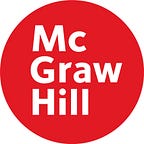[Series] Assessment Optimization #4: Analyze Results and Use Them to Inform
4 Steps to Optimizing Assessment and Boosting Achievement
For many districts, constructing a purposeful and comprehensive plan for assessment can be overwhelming. Between difficult state standards and vastly diverse student learning needs, the many moving parts of an assessment system can make planning and implementation difficult to navigate. But we can’t afford to overlook our assessment plans: assessment has the potential to improve student outcomes, and provide teachers with valuable insights. That’s why we’re here to help you optimize assessment and boost student achievement.
Over the past few weeks, we’ve been breaking down four key steps to optimizing your district’s assessment plan. We started with the importance of a strong foundation, by establishing a shared vision. Then, we moved into the classroom, with tips for connecting assessment with instruction. With step #3, we moved outward, attempting to get a broader sense of your plan by looking at balancing your assessment ecosystem. For a more detailed look into the first three steps, with examples, graphics, teacher narratives, and tips, download our full assessment planning guide below. Then, read on for step #4 →
To discover all four steps of the Assessment Optimization Process, download our assessment planning guide.
Step #4: Analyze Results and Use Them to Inform
Now it’s time to think about making purpose-driven decisions in your assessment implementation, and using student data from assessment to inform further instruction. If you’ve followed step #3 and created a balanced assessment ecosystem, then after implementation, you’ll be left with a plethora of student data. The last step to optimizing assessment, then, is to utilize the insights from this data to inform instruction. In education, we often strive to be purpose-driven and to ground all of our work in research: this is the perfect opportunity to fully integrate that strategy into our practice. The insights gleaned from assessment can be used at three levels: by the digital assessment program itself, by the instructor, and by the administrator. With each use, the adjustments made will address the needs of a wider student population — from the individual learner, to the class, to the entire school or district.
Digital Level
Some advanced digital assessment and instruction programs will adapt immediately when the student displays a learning gap. The system will provide further instruction to ensure mastery before the student is allowed to move on to the next lesson. Here, the student data is being utilized almost at a micro level: technology enables the student to engage in a highly personalized learning experience, where the teacher may not have to intervene immediately. These digital learning moments also give teachers more time for creativity and flexibility — when educational technology delivers immediate personalized instruction, teachers can focus on providing the entire class with the most engaging instruction and promoting an enthusiasm for learning.
Instructor Level
Teachers can make use of data most effectively when the system provides them with comprehensive and digestible reporting. When looking for an assessment system for your district, pay close attention to its reporting system — how simple and time-efficient will it be for a teacher to identify common learning gaps and compare individual or class-wide progress against goals and standards? When teachers have this data at their fingertips and can realistically integrate its insights into their regular instruction, you’ll see the effects in your student outcomes.
Administrator Level
The administrator should use the insights from student data in a similar way as the instructor, but at a larger scale, and with slightly different goals in mind. If the assessment system provides a truly comprehensive and digestible reporting, then administrators can identify patterns at a district level, and look at school progress towards state standards. They can also study how their school or district is performing in certain academic areas, and what subjects might need an increased focus in the next year’s planning. This is where assessment has the potential to not only influence amazing changes in your district’s student achievement, but to help the various stakeholders of your learning environment support each other, and coordinate efforts to produce the best outcomes.
For more specifics and examples of how assessment data and reporting can inform instruction at an individual, class-wide, and district level, download the full assessment planning guide:
4 Steps to Optimizing Assessment and Boosting Student Achievement
To begin exploring assessment tool options, check out Engrade® — a powerful platform that brings together the best of learning management systems and assessment solutions to help teachers unite curriculum and data.
